- Ground Cover Plants: Types and Features
- Introduction
- Types of Ground Cover Plants
- Features of Ground Cover Plants
- Conclusion
- Benefits of Ground Cover Plants in Your Garden
- 1. Weed suppression
- 2. Erosion control
- 3. Moisture conservation
- 4. Temperature moderation
- 5. Soil improvement
- 6. Aesthetic appeal
- Creeping Phlox: A Popular Ground Cover Option
- Vinca Minor: Low-Maintenance Ground Cover for Shaded Areas
- Features:
- Benefits:
- Planting and Care:
- Ajuga Reptans: Colorful and Drought-Tolerant Ground Cover
- Features of Ajuga Reptans
- Growing Ajuga Reptans
- Maintaining Ajuga Reptans
- Conclusion
- Sedum Spurium: Succulent Ground Cover for Dry-Soil Gardens
- Characteristics and Features:
- Best Growing Conditions:
- Planting and Maintenance:
- Companion Planting:
- Conclusion:
- Hosta: Versatile Ground Cover for Various Gardens
- Types of Hosta
- Features of Hosta
- Uses in the Garden
- Conclusion
- Questions and Answers:
- What are ground cover plants?
- What are some popular types of ground cover plants?
- Are there ground cover plants suitable for shady areas?
- What are the benefits of using ground cover plants in a garden?
- How should ground cover plants be cared for?
- Videos: My TOP 5 Ground Covers
Ground cover plants are an essential element for any garden. They not only add visual interest to your outdoor space, but also serve practical purposes such as preventing soil erosion, suppressing weeds, and reducing water loss. With countless varieties to choose from, finding the right ground cover plants for your garden can be a daunting task. In this article, we will explore the different types of ground cover plants available and their unique features, helping you discover the best options for your garden.
One type of ground cover plant is the creeping thyme. This low-growing perennial is known for its fragrant, tiny leaves and delicate purple flowers. Creeping thyme is not only aesthetically pleasing, but also attracts pollinators such as bees and butterflies to your garden. It is a hardy plant that can tolerate various soil types and requires little maintenance, making it an ideal choice for those who want a low-maintenance ground cover option.
Another popular ground cover plant is the moss. Moss is known for its lush green appearance and ability to thrive in shady areas where other plants struggle to grow. It requires minimal care and can withstand foot traffic, making it a great option for areas with heavy footfall such as walkways or between stepping stones. Moss also acts as a natural weed suppressant and helps retain moisture in the soil.
If you are looking for a ground cover plant that adds a splash of color to your garden, consider the creeping phlox. This perennial produces masses of vibrant flowers in shades of pink, purple, blue, and white. Creeping phlox is a versatile plant that can grow in full sun or partial shade and is tolerant of different soil conditions. It is a fast-growing plant that quickly spreads to form a dense carpet of colorful blooms.
When selecting ground cover plants for your garden, it is important to consider factors such as the plant’s growth habit, maintenance requirements, and suitability for your specific climate and soil conditions. By choosing the right ground cover plants, you can create a beautiful and functional garden space that is easy to maintain and enjoy.
Ground Cover Plants: Types and Features
Introduction
Ground cover plants are low-growing plants that spread out to cover the ground, providing multiple benefits to your garden. They serve as excellent alternatives to traditional lawns, helping to reduce maintenance and water usage, prevent soil erosion, and add visual interest to your landscape. With so many types of ground cover plants available, it can be overwhelming to choose the best options for your garden. In this article, we will explore different types of ground cover plants and their unique features, making it easier for you to decide which ones to plant in your garden.
Types of Ground Cover Plants
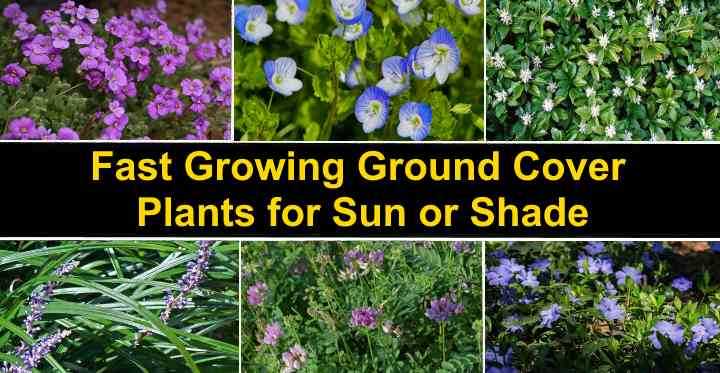
There are various types of ground cover plants to choose from, each with its own characteristics and growing conditions. Here are some popular types:
- Creeping Thyme: Creeping thyme is a low-maintenance ground cover that forms a dense mat of tiny, fragrant leaves and produces small, pink or purple flowers. It is suitable for sunny areas with well-drained soil.
- Creeping Juniper: Creeping juniper is an evergreen ground cover that features needle-like foliage. It is ideal for areas with poor soil quality and can tolerate full sun to partial shade.
- Creeping Jenny: Creeping jenny, also known as moneywort, has bright green, round leaves and yellow flowers. It thrives in moist soil and can tolerate both sun and shade.
- Japanese Spurge: Japanese spurge is a shade-loving ground cover with glossy, dark green leaves. It forms dense mats and produces small, white flowers. It is suitable for areas with moist soil and partial to full shade.
Features of Ground Cover Plants
Ground cover plants offer several features that make them beneficial for your garden:
- Low Maintenance: Ground cover plants require minimal maintenance once established. They suppress weed growth, reducing the need for regular weeding.
- Erosion Control: The spreading nature of ground cover plants helps stabilize the soil, preventing erosion on slopes and other vulnerable areas.
- Moisture Retention: Ground cover plants act as a natural mulch, retaining moisture in the soil and reducing water evaporation.
- Visual Interest: With their variety of textures, colors, and forms, ground cover plants add visual interest and diversity to your garden.
- Wildlife Habitat: Many ground cover plants attract beneficial insects, birds, and other wildlife, promoting biodiversity in your garden.
Conclusion
Ground cover plants are excellent choices for adding beauty, reducing maintenance, and providing numerous benefits to your garden. Whether you prefer low-growing flowers or evergreen foliage, there is a wide variety of ground cover plants to suit your needs. Consider the specific growing conditions of your garden and choose the types that will thrive in your area. With the right selection, ground cover plants can transform your garden into a lush and vibrant landscape.
Benefits of Ground Cover Plants in Your Garden
Ground cover plants provide numerous benefits in your garden, both aesthetically and practically. Here are some of the main advantages of incorporating ground cover plants into your landscape:
1. Weed suppression
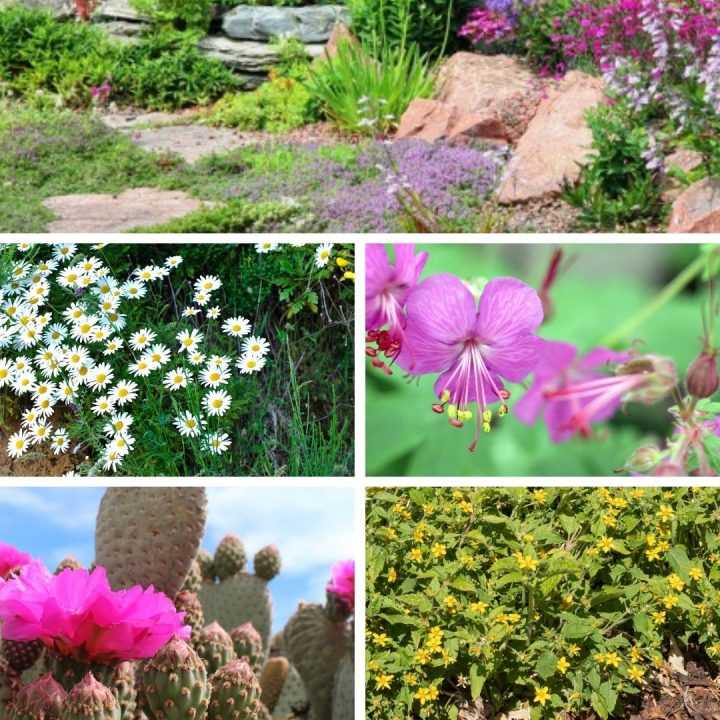
One of the key benefits of ground cover plants is their ability to suppress weeds. By covering the soil, they can prevent weed seeds from germinating and competing with your desired plants for nutrients, water, and sunlight. This can help reduce the amount of time and effort spent on weed control in your garden.
2. Erosion control
Ground cover plants can help prevent soil erosion by stabilizing the soil with their root systems. Their dense foliage also acts as a barrier, preventing rainwater from washing away the topsoil. This is especially beneficial on slopes or areas prone to erosion.
3. Moisture conservation

By acting as a natural mulch, ground cover plants help to conserve moisture in the soil. Their foliage shades the soil, preventing it from drying out too quickly, and reducing evaporation. This can be particularly advantageous in dry or arid climates, and can help reduce the amount of water needed to maintain your garden.
4. Temperature moderation
The dense coverage provided by ground cover plants can help to moderate soil temperatures. In hot climates, they can help to keep the soil cooler by providing shade, while in colder climates, they can act as insulation, protecting the soil from extreme temperature fluctuations.
5. Soil improvement
Many ground cover plants have deep root systems that help improve soil structure and fertility. As they grow, their roots break up compacted soil, improving its aeration and drainage. Some ground cover plants are also nitrogen-fixing, meaning they take atmospheric nitrogen and convert it into a form that can be used by plants, enriching the soil with this essential nutrient.
6. Aesthetic appeal
In addition to their practical benefits, ground cover plants can enhance the beauty of your garden. They come in a wide variety of colors, textures, and foliage types, allowing you to create visually pleasing patterns and combinations. Whether you want a lush carpet of flowers or a low-maintenance green backdrop, there is a ground cover plant to suit your aesthetic preferences.
Overall, ground cover plants are a valuable addition to any garden. They offer a range of advantages, from weed suppression and erosion control to moisture conservation and soil improvement. Furthermore, they can enhance the visual appeal of your garden, allowing you to create a beautiful and sustainable landscape.
Creeping Phlox: A Popular Ground Cover Option
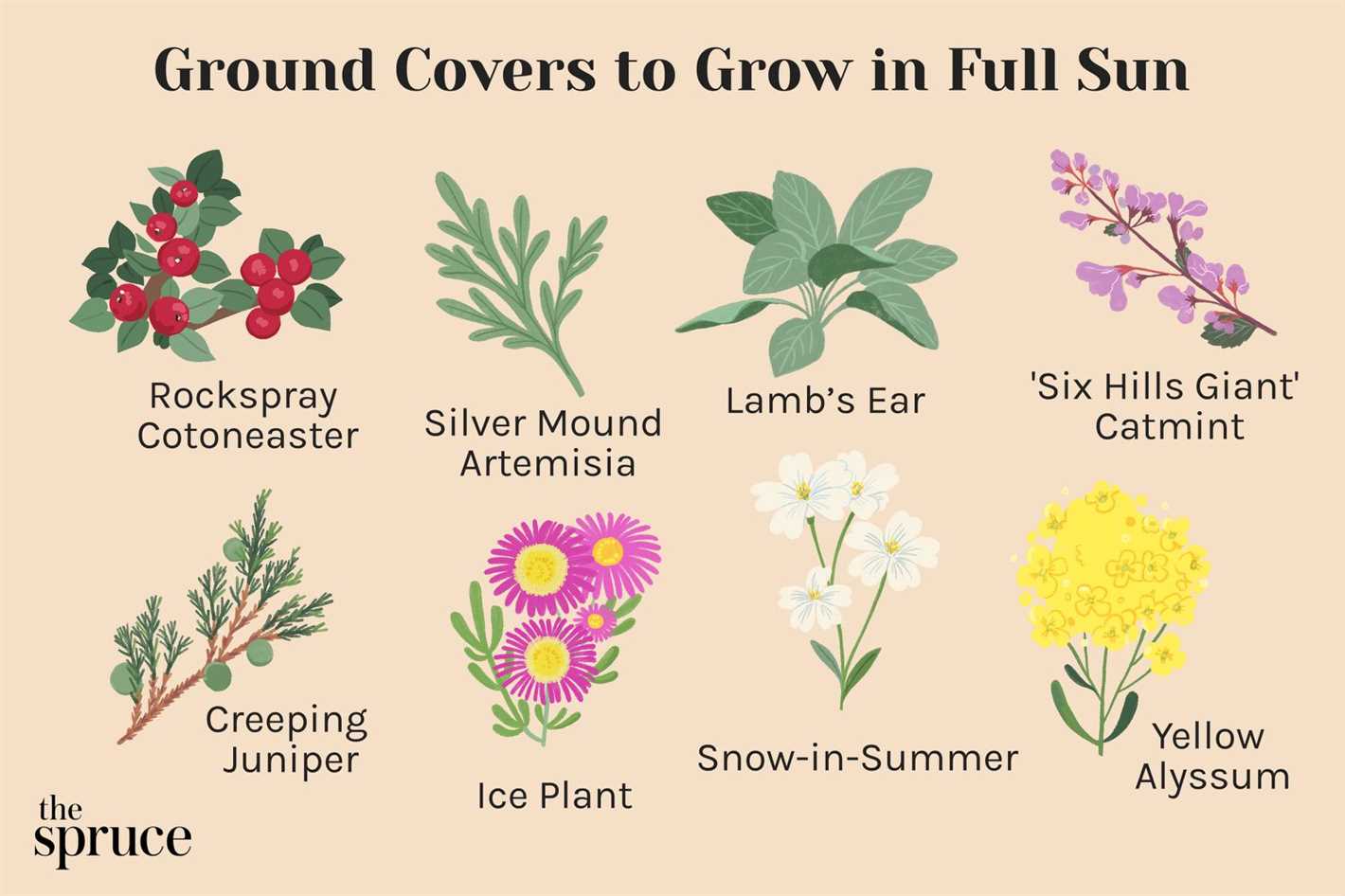
Creeping Phlox, or Phlox subulata, is a popular ground cover plant that is known for its vibrant and colorful flowers. It is native to North America and is commonly found in rocky or sandy areas.
Characteristics:
- Creeping Phlox is a low-growing perennial that forms a dense mat of foliage.
- It has small, needle-like leaves that are evergreen, providing year-round interest in the garden.
- The flowers of Creeping Phlox are star-shaped and come in a wide range of colors, including pink, purple, blue, white, and red.
Benefits:
- Creeping Phlox is an excellent ground cover option as it quickly spreads and fills in empty spaces, preventing weeds from growing.
- It is drought-tolerant and can withstand dry conditions, making it a great choice for areas with low water availability.
- The flowers of Creeping Phlox attract pollinators such as bees and butterflies, adding life and movement to the garden.
- It is a low-maintenance plant that requires minimal care once established.
Planting and Care:
- Choose a sunny location with well-draining soil for planting Creeping Phlox.
- Prepare the soil by removing any weeds or rocks and loosening it with a garden fork.
- Dig a hole that is slightly larger than the root ball of the plant and place the plant in the hole.
- Backfill with soil and gently firm it around the plant.
- Water the plant thoroughly and mulch around it to retain moisture and suppress weed growth.
- Creeping Phlox should be watered regularly, especially during dry periods, but avoid overwatering as it can lead to root rot.
- Deadhead the flowers after they fade to promote additional blooming.
- Divide the plant every 2-3 years to control its spread and rejuvenate its growth.
Uses:
Creeping Phlox is commonly used as ground cover in rock gardens, slopes, and borders. It can also be planted in containers or used as a trailing plant in hanging baskets.
In conclusion, Creeping Phlox is a versatile and beautiful ground cover option that is well-suited for various garden settings. Its vibrant flowers, evergreen foliage, and low-maintenance nature make it a popular choice among gardeners.
Vinca Minor: Low-Maintenance Ground Cover for Shaded Areas
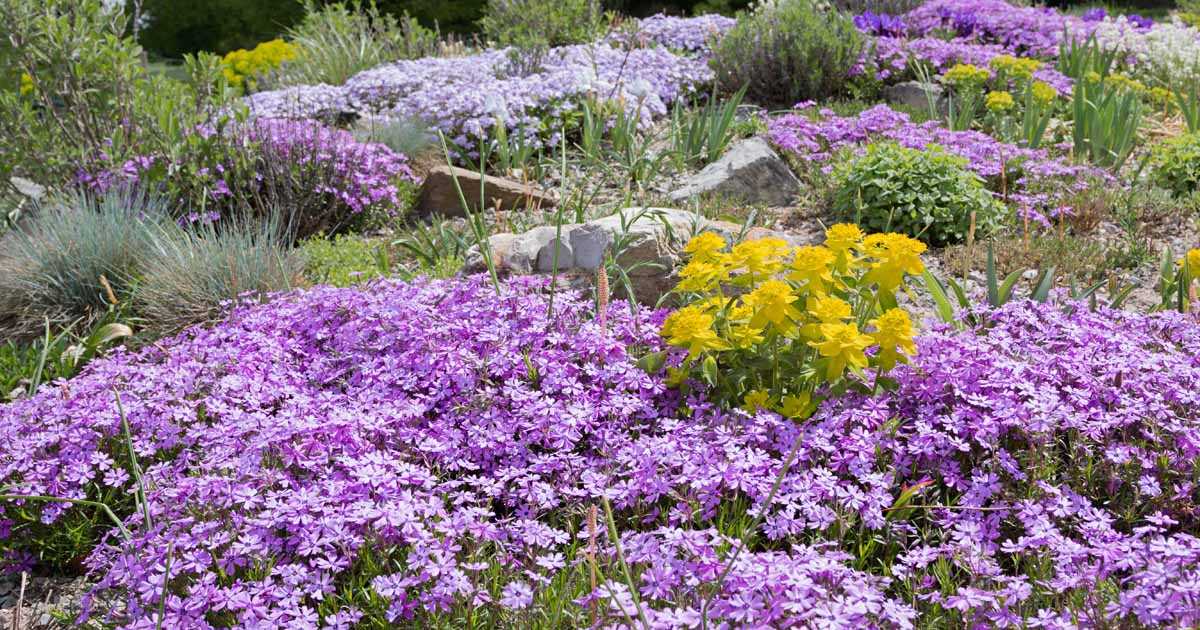
If you are looking for a low-maintenance ground cover option for shaded areas in your garden, Vinca Minor is an excellent choice. Also known as Periwinkle or Creeping Myrtle, Vinca Minor is a hardy plant that can add beauty and depth to your landscape. Here are some features and benefits of using Vinca Minor as a ground cover:
Features:
- Vinca Minor is a trailing evergreen perennial that spreads rapidly, forming a dense carpet of foliage.
- It typically grows to a height of 4-6 inches and spreads up to 24 inches wide, making it an excellent ground cover option.
- The leaves of Vinca Minor are glossy, oval-shaped, and dark green in color.
- It produces beautiful small flowers in shades of blue, lavender, or white during the spring and summer months.
- Vinca Minor is drought-tolerant once established and can survive in a variety of soil conditions, including clay and sandy soils.
- This ground cover plant thrives in shaded areas, making it an ideal choice for under trees or along the edges of buildings.
Benefits:
Using Vinca Minor as a ground cover in your garden can offer several benefits, including:
- Weed suppression: Vinca Minor forms a dense mat of foliage, preventing weed growth and reducing the need for regular weeding.
- Erosion control: Its spreading habit helps stabilize soil on slopes, preventing erosion.
- Low maintenance: Vinca Minor requires minimal care once established. It is relatively pest and disease-resistant and does not require frequent watering or fertilization.
- Attractive appearance: The glossy green leaves and delicate flowers of Vinca Minor add visual interest to your garden, creating a lush and vibrant look.
Planting and Care:
To successfully grow Vinca Minor as a ground cover, follow these planting and care tips:
- Site selection: Choose a shaded area in your garden with well-draining soil.
- Preparation: Clear the planting area of any existing weeds or grass. Loosen the soil and amend it with organic matter if necessary.
- Planting: Dig small holes and space Vinca Minor plants approximately 12-18 inches apart, allowing room for them to spread.
- Watering: Water the newly planted Vinca Minor thoroughly and keep the soil evenly moist until they are established.
- Mulching: Apply a layer of mulch around the plants to help conserve moisture and suppress weed growth.
- Maintenance: Once established, Vinca Minor requires little maintenance. However, it is a good idea to trim back any overgrown or leggy growth in early spring to encourage bushier growth.
With its attractive foliage, beautiful flowers, and low-maintenance nature, Vinca Minor is an excellent choice for a ground cover plant in shaded areas. Consider adding this versatile plant to your garden to create a vibrant and visually appealing landscape.
Ajuga Reptans: Colorful and Drought-Tolerant Ground Cover
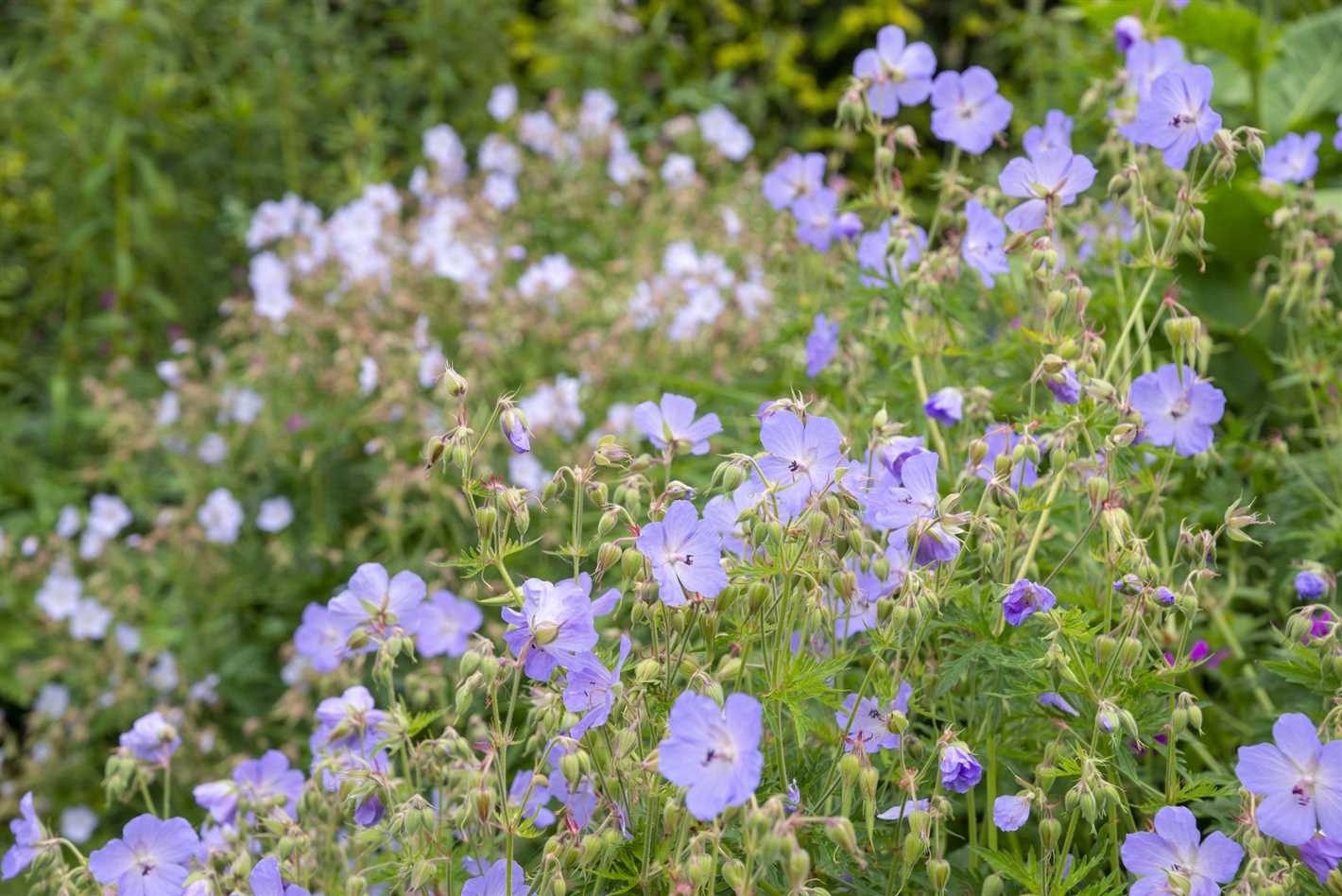
Ajuga reptans, also known as bugleweed or carpet bugle, is a versatile ground cover plant that is popular for its colorful foliage and ability to thrive in dry conditions. This low-growing perennial plant is native to Europe but has been naturalized in many parts of the world.
Ajuga reptans has a spreading habit and forms dense mats of foliage, making it an excellent choice for filling in bare spots or covering large areas. It is commonly used as a ground cover in rock gardens, borders, and shady areas under trees.
Features of Ajuga Reptans
Ajuga reptans is characterized by its vibrant, variegated leaves, which come in shades of green, bronze, purple, and burgundy. The leaves are typically small and oval-shaped, with a glossy texture. Some varieties of Ajuga reptans also produce spikes of flowers in shades of blue, purple, pink, or white.
One of the main advantages of Ajuga reptans is its ability to tolerate dry conditions. Once established, this plant can survive with minimal water requirements. It is a great choice for areas with low rainfall or if you’re looking for a low-maintenance ground cover option.
Growing Ajuga Reptans
Ajuga reptans is relatively easy to grow and care for. It prefers well-drained soil and can adapt to a wide range of soil types, including sandy or clay soils. This plant thrives in partial shade but can tolerate full sun if provided with enough moisture. However, it may struggle in extreme heat conditions.
When planting Ajuga reptans, space the plants about 6-12 inches apart to allow for proper spreading. Water the plants regularly during the first growing season to establish a strong root system. Once established, the plants can be divided every few years to control their spread or rejuvenate the foliage.
Maintaining Ajuga Reptans
Ajuga reptans requires minimal maintenance once established. It is important to keep the area around the plants weed-free to prevent competition for nutrients and water. Mulching can help retain moisture and suppress weeds.
Every spring, prune the plants to remove any old or damaged foliage and encourage fresh growth. This will also help prevent the center of the plant from becoming bare and unattractive.
Conclusion
Ajuga reptans is a colorful and drought-tolerant ground cover option that can add beauty and functionality to your garden. With its vibrant foliage and ability to thrive in dry conditions, it is a great choice for filling in bare spots, covering large areas, or adding interest to shady areas. Give this versatile plant a try and enjoy its low-maintenance beauty.
Sedum Spurium: Succulent Ground Cover for Dry-Soil Gardens
Sedum spurium, commonly known as two-row or creeping sedum, is a beautiful and low-maintenance succulent ground cover plant that thrives in dry-soil gardens. With its vibrant foliage and ability to survive in challenging conditions, Sedum spurium has become a popular choice among gardeners looking to add texture and color to their landscapes.
Characteristics and Features:
- Sedum spurium is a low-growing perennial that forms a dense mat, making it an excellent ground cover option.
- It features small, fleshy leaves that come in a variety of colors, including green, red, bronze, and variegated.
- During the summer, Sedum spurium produces clusters of star-shaped flowers on tall stems, adding a touch of beauty to the garden.
- This succulent ground cover is drought-tolerant and can thrive in sandy or rocky soils with low fertility.
- It is a hardy plant that can withstand cold temperatures and is suitable for USDA hardiness zones 3-9.
Best Growing Conditions:
Sedum spurium prefers full sun but can tolerate partial shade. It is important to provide well-draining soil, as excessively wet conditions can cause root rot. This succulent ground cover is perfect for dry-soil gardens, rock gardens, sloping areas, and even green roofs.
Planting and Maintenance:
- Prepare the planting area by removing weeds and loosening the soil.
- Space Sedum spurium plants about 6-12 inches apart, as they will spread and fill in the gaps over time.
- Water the plants thoroughly after planting, and then allow the soil to dry out between watering sessions.
- Apply a layer of organic mulch around the plants to help conserve moisture and suppress weed growth.
- Trim back any overgrown or leggy stems in early spring to maintain a neat and compact appearance.
Companion Planting:
Sedum spurium pairs well with other low-growing ground covers like creeping thyme, moss phlox, and creeping phlox. This combination creates a stunning tapestry of colors and textures, enhancing the overall visual appeal of the garden.
Conclusion:
If you’re looking to beautify your dry-soil garden, Sedum spurium is an excellent choice. Its succulent nature, low-maintenance requirements, and ability to thrive in challenging conditions make it a perfect ground cover plant. Enjoy the vibrant colors and lovely blooms that Sedum spurium brings to your garden all year round.
Hosta: Versatile Ground Cover for Various Gardens
Hosta is a popular ground cover plant that is known for its versatility and attractive foliage. It is a perennial plant that is native to East Asia and is widely cultivated in gardens around the world.
Types of Hosta
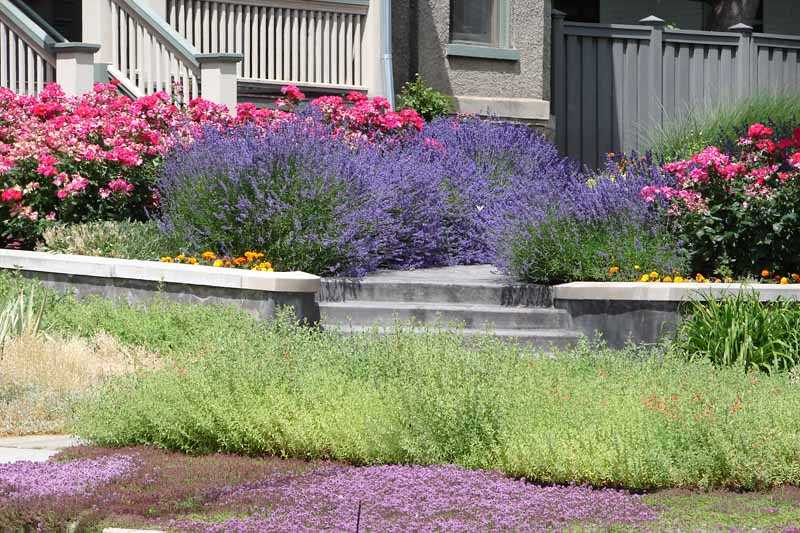
There are numerous types of hosta available, each with its own unique characteristics. Some of the most popular types include:
- Hosta ‘Francee’: This variety features green leaves with white margins and reaches a height of about 20 inches.
- Hosta ‘Patriot’: With its dark green leaves and white edges, this hosta can add a touch of elegance to any garden.
- Hosta ‘Sum and Substance’: This variety is known for its large, chartreuse leaves that can grow up to 2 feet long, making it a standout in any garden.
Features of Hosta
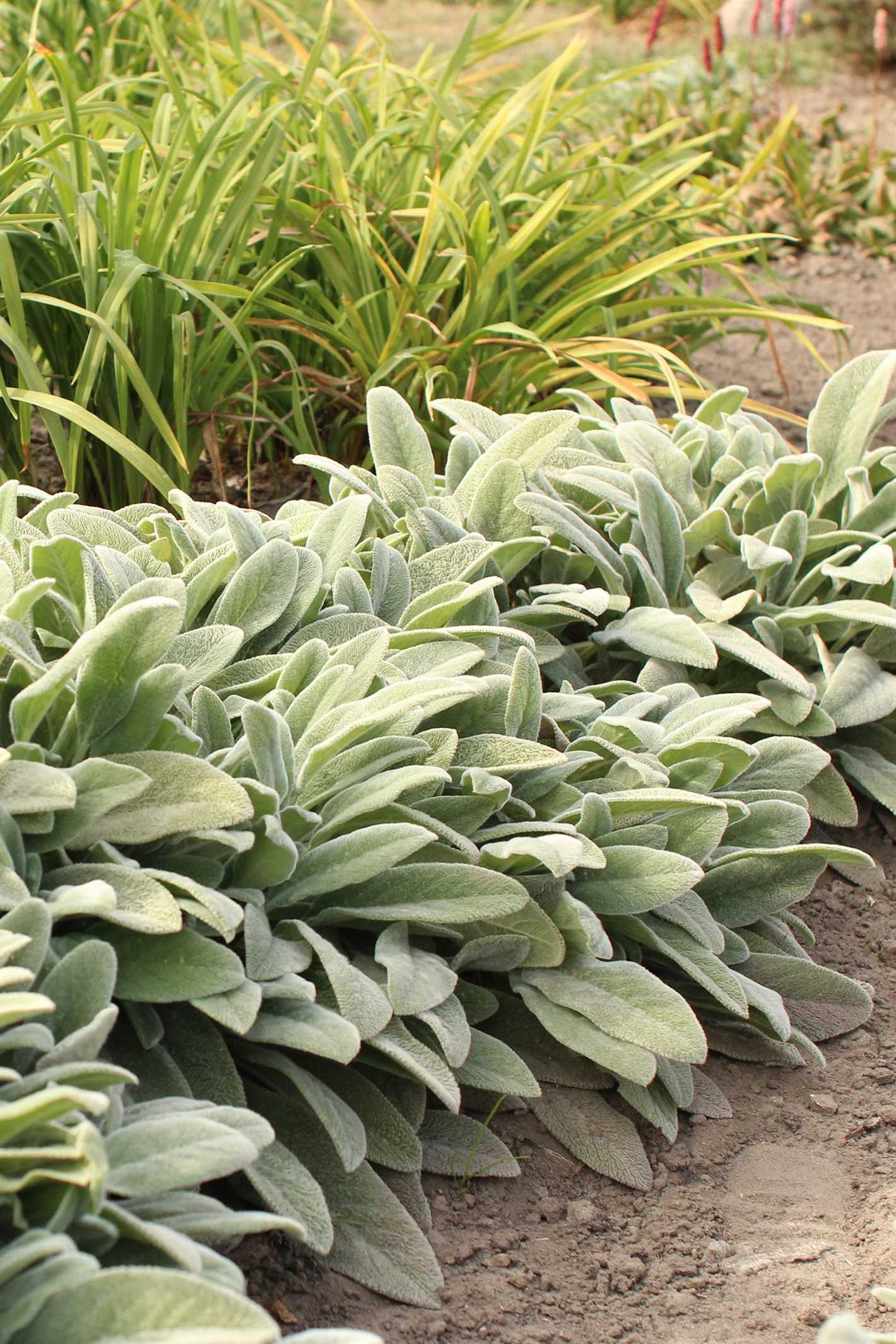
Hostas are known for their ornamental foliage, which comes in a variety of shades of green, blue, and yellow. They have broad leaves that are often heart-shaped or ovate, and some varieties have variegated patterns. The leaves can be smooth or corrugated, adding texture to the garden.
Hostas are also appreciated for their ability to thrive in shade, making them an excellent choice for gardens with limited sunlight. They are low-maintenance plants that can withstand various soil conditions and are relatively resistant to pests and diseases.
Uses in the Garden
Hostas are versatile plants that can be used in various ways to enhance your garden. Some common uses include:
- Ground cover: Hostas can be planted in large masses to create a lush ground cover that will suppress weed growth.
- Border plant: Their low-growing habit and attractive foliage make hostas a great choice for border plantings.
- Accent plant: Hostas can be used as focal points in the garden, drawing attention with their unique foliage.
- Container plant: Some smaller varieties of hostas are well-suited for container gardening, adding beauty to patios and balconies.
Conclusion
If you’re looking for a versatile ground cover plant for your garden, hostas are an excellent choice. With their attractive foliage, low-maintenance nature, and ability to thrive in shade, hostas can bring beauty and elegance to any garden setting. Consider adding hostas to your garden and enjoy the many benefits they offer.
Questions and Answers:
What are ground cover plants?
Ground cover plants are low-growing plants that spread out and cover the ground. They are commonly used in gardens and landscapes to prevent soil erosion, suppress weeds, and add beauty to the area.
What are some popular types of ground cover plants?
Some popular types of ground cover plants include creeping thyme, creeping juniper, creeping phlox, vinca minor, and sweet woodruff.
Are there ground cover plants suitable for shady areas?
Yes, there are several ground cover plants that thrive in shady areas. Some examples include English ivy, pachysandra, lamium, and hosta.
What are the benefits of using ground cover plants in a garden?
Ground cover plants provide a number of benefits in a garden. They suppress weeds, reduce the need for watering, prevent soil erosion, improve soil fertility, and add visual interest to the landscape.
How should ground cover plants be cared for?
Ground cover plants should be watered regularly, especially during the first year after planting. They may also need occasional pruning or trimming to maintain their shape and to prevent them from becoming too invasive.







